|
|

|
|
Author
|
Topic: Air and Space: Moving Beyond Earth
|
Robert Pearlman
Editor Posts: 42988
From: Houston, TX
Registered: Nov 1999
|
 posted 11-19-2009 05:52 PM
posted 11-19-2009 05:52 PM
   
collectSPACE Hubble instruments-turned-artifacts star in new Smithsonian Air and Space gallery
The camera that captured many of the Hubble Space Telescope's most famous images and the "contact lenses" that focused the observatory's flawed mirror debuted Wednesday at the Smithsonian's National Air and Space Museum in Washington, DC along with the first phase of a new interactive gallery devoted to humans living and working in space.
"Moving Beyond Earth", which replaces the prior Rocketry and Space Flight gallery that originally opened just before the start of the space shuttle era in 1979, seeks to tell the story of the U.S. Space Transportation System (STS) and the accompanying efforts to build a space station with an approach mimicking NASA's own history.
"The gallery is in its first stage," explained curator Valerie Neal. "What you see here today is essentially a footprint for what will be a fully built-out gallery in the next two years. We are approaching this incrementally, just as NASA approached the International Space Station. We are not doing it all at once, we're phasing it in, element by element." 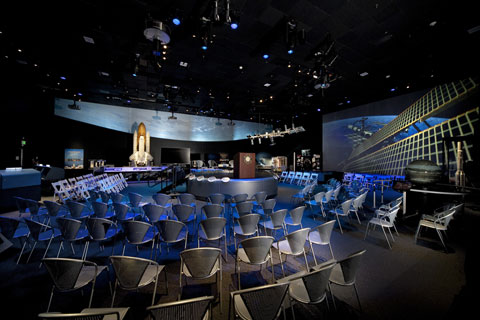
Gallery 113: "Moving Beyond Earth." Credit: Eric Long/NASM
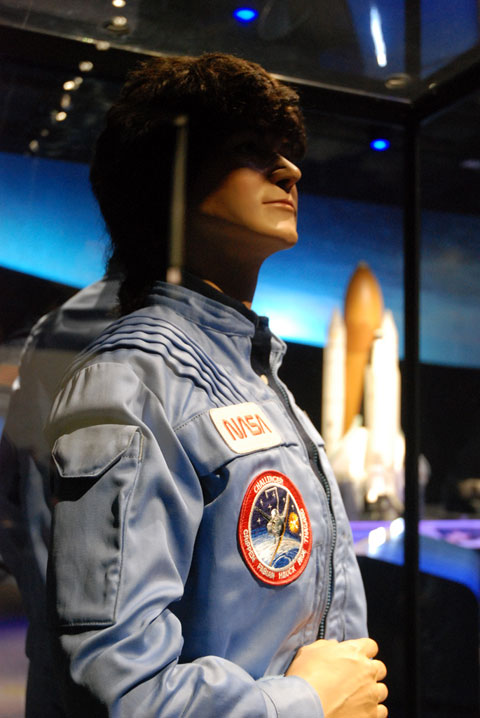
Sally Ride's flown STS-7 flight suit. Credit: Robert Pearlman/collectSPACE
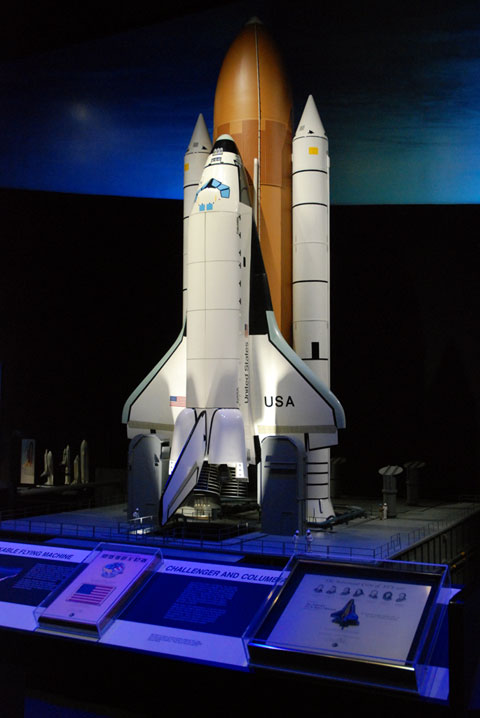
1:24 scale 12-foot space shuttle model. Credit: Robert Pearlman/collectSPACE
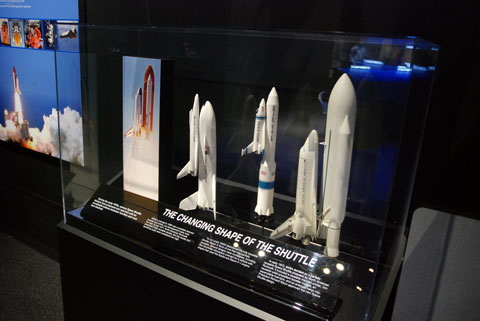
Shuttle concept models: "The Changing Shape of the Shuttle." Credit: Robert Pearlman/collectSPACE
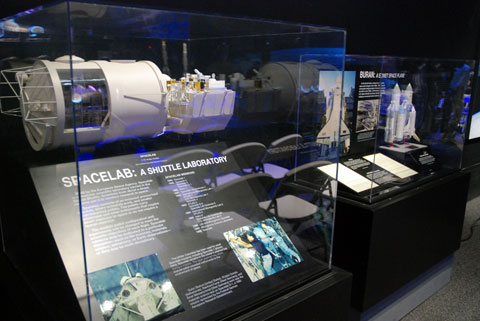
Spacelab and Buran models. Credit: Robert Pearlman/collectSPACE
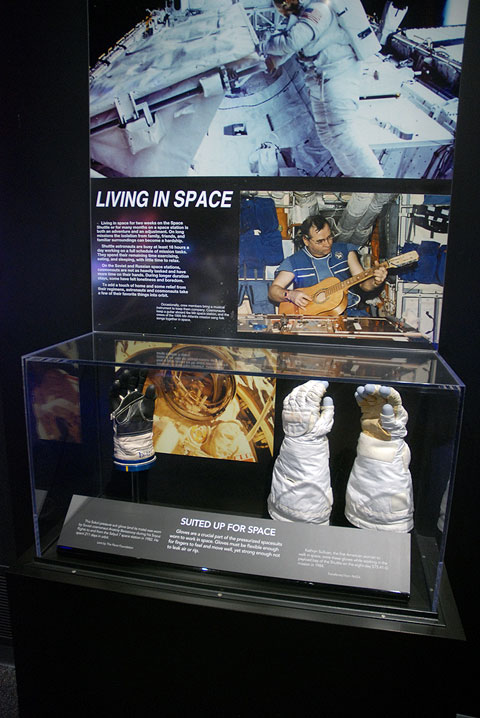
Russian Sokol and U.S. extravehicular mobility unit gloves. Credit: Robert Pearlman/collectSPACE
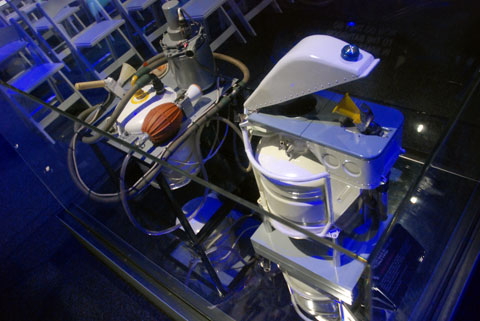
Russian Mir and International Space Station toilets. Credit: Robert Pearlman/collectSPACE
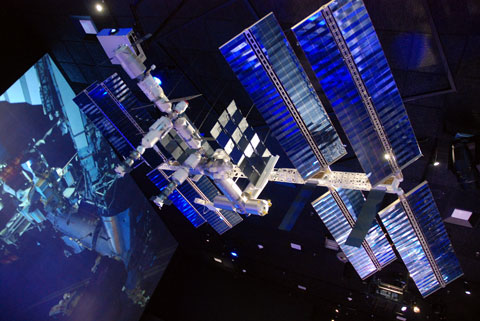
International Space Station model. Credit: Robert Pearlman/collectSPACE
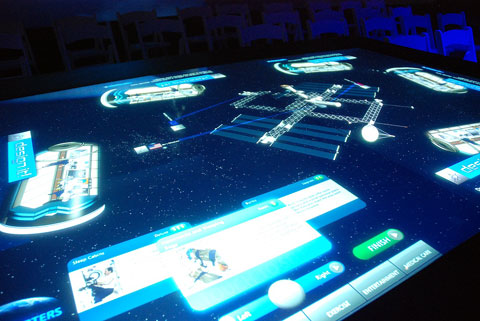
Table-top touch-screen Design It! interactive. Credit: Robert Pearlman/collectSPACE
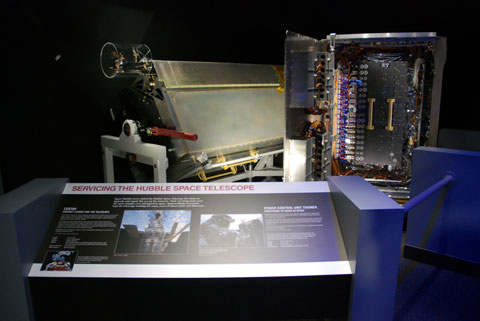
Hubble Space Telescope COSTAR and Power Control Unit trainer. Credit: Robert Pearlman/collectSPACE
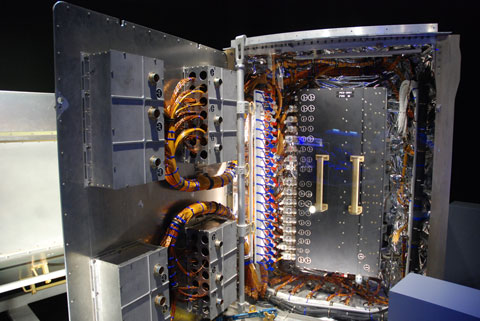
Hubble Space Telescope Power Control Unit trainer. Credit: Robert Pearlman/collectSPACE
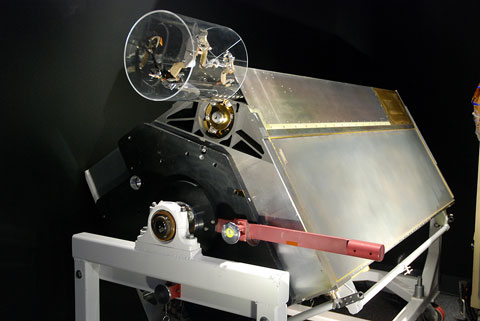
Hubble Space Telescope COSTAR "corrective lenses". Credit: Robert Pearlman/collectSPACE
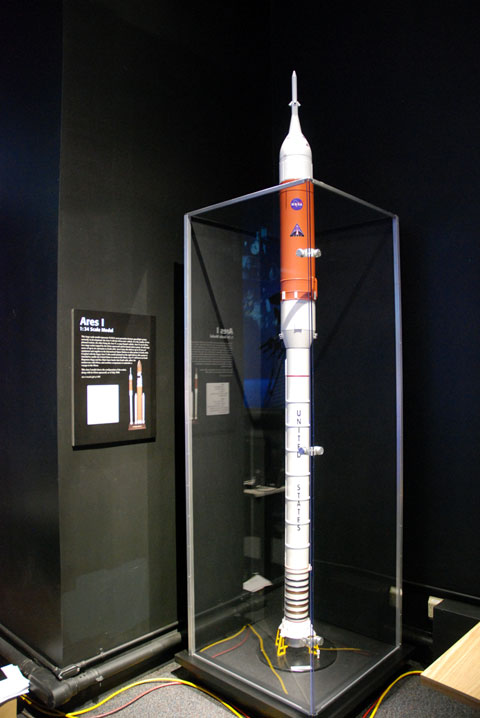
Ares I launch vehicle model. Credit: Robert Pearlman/collectSPACE
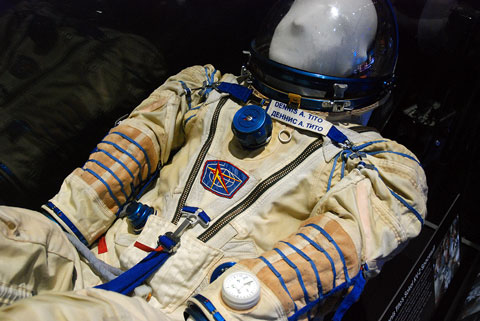
Space tourist Dennis Tito's flown Sokol pressure suit. Credit: Robert Pearlman/collectSPACE
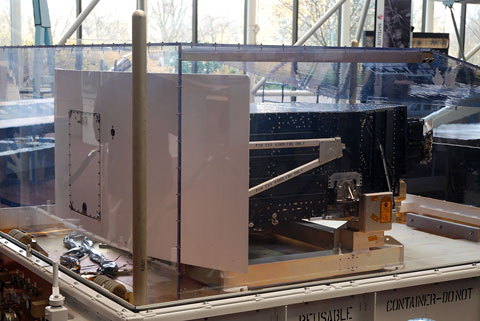
Hubble Space Telescope Wide-Field Planetary Camera-2. Credit: Robert Pearlman/collectSPACE
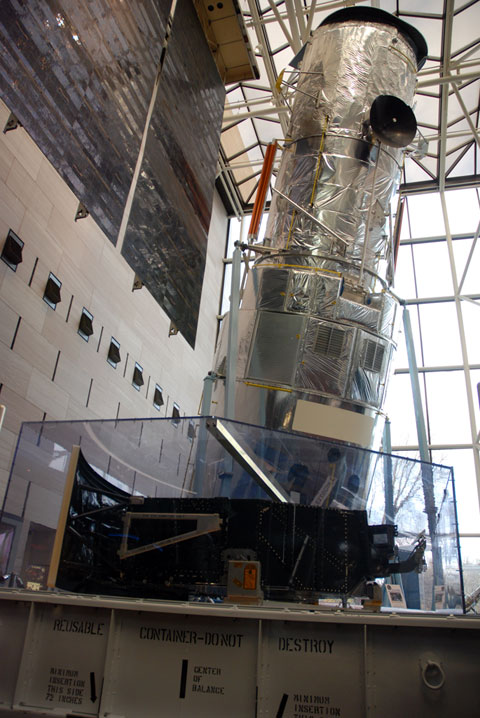
Wide-Field Planetary Camera-2 beneath full-scale Hubble model. Credit: Robert Pearlman/collectSPACE |
Robert Pearlman
Editor Posts: 42988
From: Houston, TX
Registered: Nov 1999
|
 posted 11-19-2009 05:54 PM
posted 11-19-2009 05:54 PM
   
Smithsonian release First Stage of "Moving Beyond Earth" Opens at the National Air and Space MuseumHow can human spaceflight become routine, economical, practical and safe? How can a home and workplace be created in the extreme environment of space? What does the future hold for humans in space? Will people be able to travel to far-away worlds beyond the moon? Do the benefits of human spaceflight outweigh the risks and expense? "Moving Beyond Earth," a new exhibition at the National Air and Space Museum, asks visitors to consider these questions and encourages them to follow the developing story of humans in space. The first stage of "Moving Beyond Earth" opens today, with 25 historical artifacts, a presentation center, two wall-size projections and six decision-making interactive displays. When completed in late 2011, the exhibition will highlight the space shuttle and international space station and look beyond to the various possibilities for future space exploration. "People always ask us what spaceflight is 'really like,'" said Gen. J.R. "Jack" Dailey, director of the museum. "Our new exhibit 'Moving Beyond Earth' combines artifacts with computer-based interactives and live presentations to answer that question and inspire visitors of all ages." "NASA and the Smithsonian capture the imagination of people everywhere across this great nation," said Lori Garver, NASA deputy administrator. "This new exhibition will inspire curiosity and create interest, especially for our young people, to go into science, technology, engineering and math careers." The artifacts on display reflect the exhibition's three main themes: Moving into Space, Living and Working in Space and Envisioning our Future in Space. A 12-foot-tall space-shuttle model and other launch-vehicle models represent the quest for routine access to space. The Corrective Optics Space Telescope Axial Replacement, COSTAR, brought back from the Hubble Space Telescope on the STS-125 mission, and the HST Power Control Unit Trainer, used by astronauts to practice the difficult task of replacing the electrical nerve center of the HST, convey the challenges of working in space, while the suit worn by space tourist Dennis Tito and a model Ares launch vehicle suggest future prospects for commercial spaceflight to the moon. As visitors walk through the gallery, they are placed "in orbit" by an expansive view of the Earth that drifts over one gallery wall, while a fly-around tour of the international space station fills another wall. A presentation stage for live events, broadcasts and webcasts at the center of the gallery serves as the platform for SpaceFlight Academy, a group quiz game where visitors can test their space smarts and become "flight ready." Visitors can also experience aspects of spaceflight through interactive computer kiosks where they can serve as mission control's flight director to keep a shuttle mission on track, equip a new module for the space station, manipulate and assemble space-station elements, explore the moon and Mars and match visitors' interests to jobs in the spaceflight workforce. Support for "Moving Beyond Earth" is provided by NASA. |
Robert Pearlman
Editor Posts: 42988
From: Houston, TX
Registered: Nov 1999
|
 posted 11-19-2009 05:56 PM
posted 11-19-2009 05:56 PM
   
NASA release NASA Provides Venerable Hubble Hardware to SmithsonianTwo key instruments from NASA's Hubble Space Telescope have a new home in the Smithsonian's National Air and Space Museum in Washington after being returned to Earth aboard space shuttle Atlantis last May. Astronauts brought back the Wide Field and Planetary Camera 2, or WFPC-2, and the Corrective Optics Space Telescope Axial Replacement, or COSTAR, after more than 15 years in space. The camera returned the iconic images that now adorn posters, album covers, the Internet, classrooms and science text books worldwide. "This was the camera that saved Hubble," said Ed Weiler, associate administrator for the Science Mission Directorate at NASA Headquarters in Washington. "I have looked forward for a long time to stand in front of this very instrument while on display to the public." After Hubble's launch and deployment aboard the shuttle in 1990, scientists realized the telescope's primary mirror had a flaw, known as a spherical aberration. The outer edge of the mirror was ground too flat by a depth of 2.2 microns, roughly equal to one-fiftieth the thickness of a human hair. This tiny flaw resulted in fuzzy images because some of the light from the objects being studied was scattered. Hubble's first servicing mission provided the telescope with hardware that basically acted as eye glasses. Launched in December 1993 aboard space shuttle Endeavour, the mission added the WFPC-2, about the size of a baby grand piano, and COSTAR, about the size of a telephone booth. The WFPC-2 had the optical fix built in, while the COSTAR provided the optical correction for other Hubble instruments. The WFPC-2 made more than 135,000 observations of celestial objects from 1993 to 2009. The camera was the longest serving and most prolific instrument aboard Hubble. "For years the Wide Field and Planetary Camera 2 has been taking pictures of the universe," said John Trauger of NASA's Jet Propulsion Laboratory in Pasadena, Calif. "Today, we are taking pictures of the WFPC-2 and I guess if there was ever a camera that deserves to have its picture taken, this is it." The Hubble instruments will be on display in the National Air and Space Museum's Space Hall through mid-December. They then will travel to Southern California to go on temporary display at several venues. In March 2010, the instruments will return to the Smithsonian Air and Space Museum, where they will take up permanent residency. NASA's Jet Propulsion Laboratory designed and built the WFPC-2. The COSTAR instrument was built by Ball Aerospace in Boulder, Colo. The Hubble Space Telescope is a project of international cooperation between NASA and the European Space Agency. The project is managed by NASA's Goddard Space Flight Center in Greenbelt, Md. The Space Telescope Science Institute in Baltimore conducts Hubble science operations. The institute is operated for NASA by the Association of Universities for Research in Astronomy Inc., in Washington. | |
Contact Us | The Source for Space History & Artifacts
Copyright 2020 collectSPACE.com All rights reserved.

Ultimate Bulletin Board 5.47a
|
|

|
 advertisement advertisement

|



























